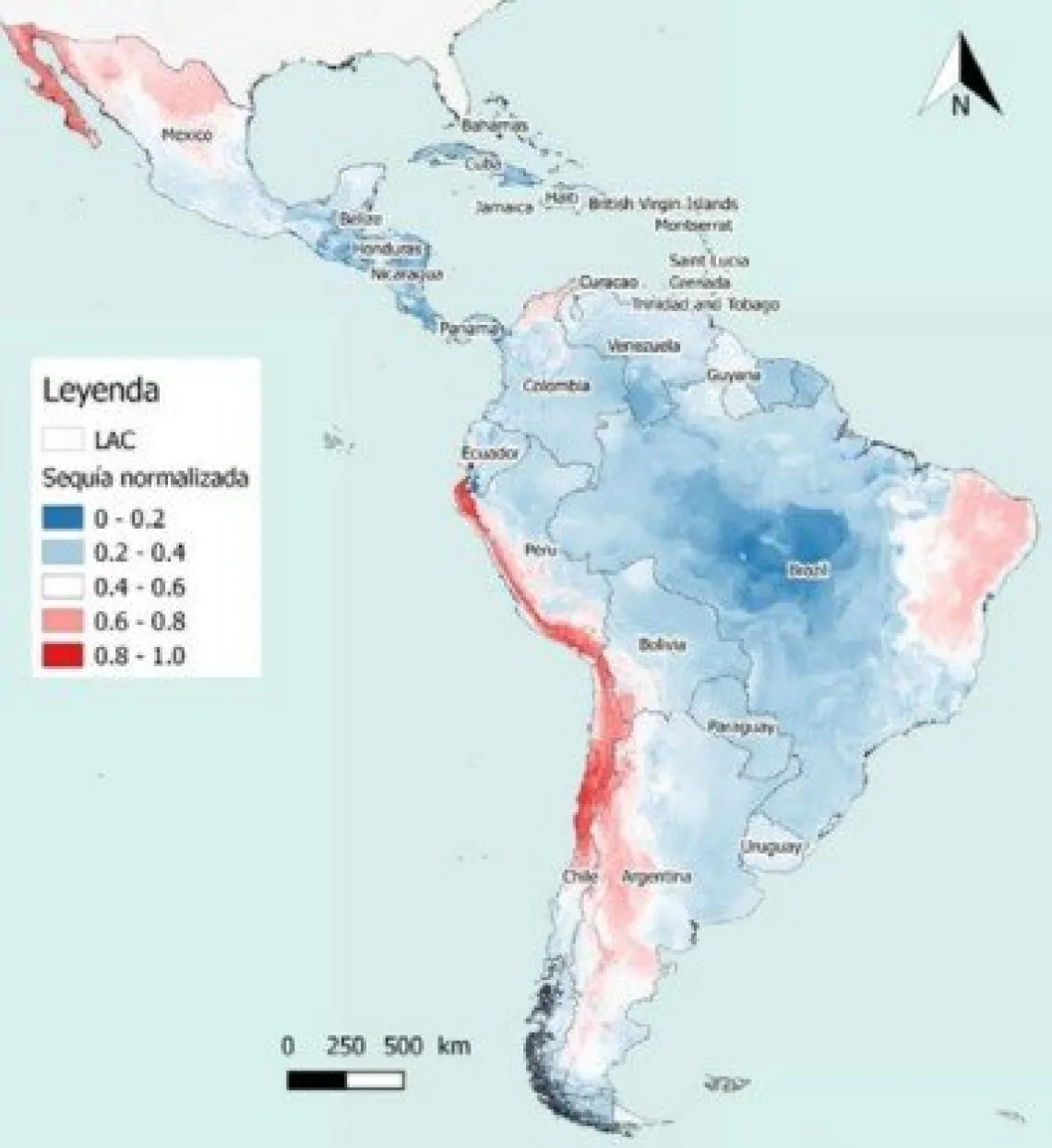Drought Atlas for Latin America and the Caribbean Released by UNESCO and CAZALAC

UNESCO and the Water Center for Arid and Semi-Arid Zones in Latin America and the Caribbean (CAZALAC) have released the Atlas de Sequías de América Latina y el Caribe, or Drought Atlas for Latin America and the Caribbean. The report is available, in Spanish, at http://unesdoc.unesco.org/images/0026/002658/265894s.pdf.
The publication is designed to answer questions that a drought planner or manager might ask, such as, “With what frequency, or every how many years, would one expect to find oneself in a severe meteorological drought, such a one characterized by an annual precipitation less than or equal to 40% of a normal year?” The answer to such a question requires probabilistic approach, to estimate the “return period” associated to the specified event, based on a historical series of annual rainfall records for the site or study area. The methodology is called Regional Frequency Analysis, based on a statistical technique called L-moments (RFA-LM) and developed by Hosking and Wallis (1997).
However, rather than simply document the methodology used, the report contains 12 continental maps showing the minimum expected precipitation for return periods from 2 to 100 years. Another four continental maps show recurrence intervals for 10, 20, 30 and 40% deficits in annual precipitation. And perhaps the strongest element of the report is the ten case studies using the methodology, from Argentina, Bolivia, Brasil, Chile, Colombia, Ecuador, Honduras, Peru, Uruguay and Venezuela.
The project was inspired by the 1994 U.S. National Drought Atlas, assembled by what is now the Institute for Water Resources of the U.S. Army Corps of Engineers as part of the National Drought Study. As described in the report’s prologue by Dr. Blanca Jiménez Cisneros, Secretary of UNESCO’s International Hydrological Programme, the Atlas is a clear example of regional collaboration, where the networks of IHP and its Water Family, through its research centers and associated universities, have collaborated to produce a regional analysis. Begun with initial collaboration between CAZALAC and the International Center for Integrated Water Resources Management (ICIWaRM), the bulk of the work was performed at more than ten CAZALAC-led training and exchange workshops. These received financial and technical assistance from the host countries as well as from the Government of Flanders (FUST) and the European Commission through the Joint Research Center (JRC) and RALCEA.
